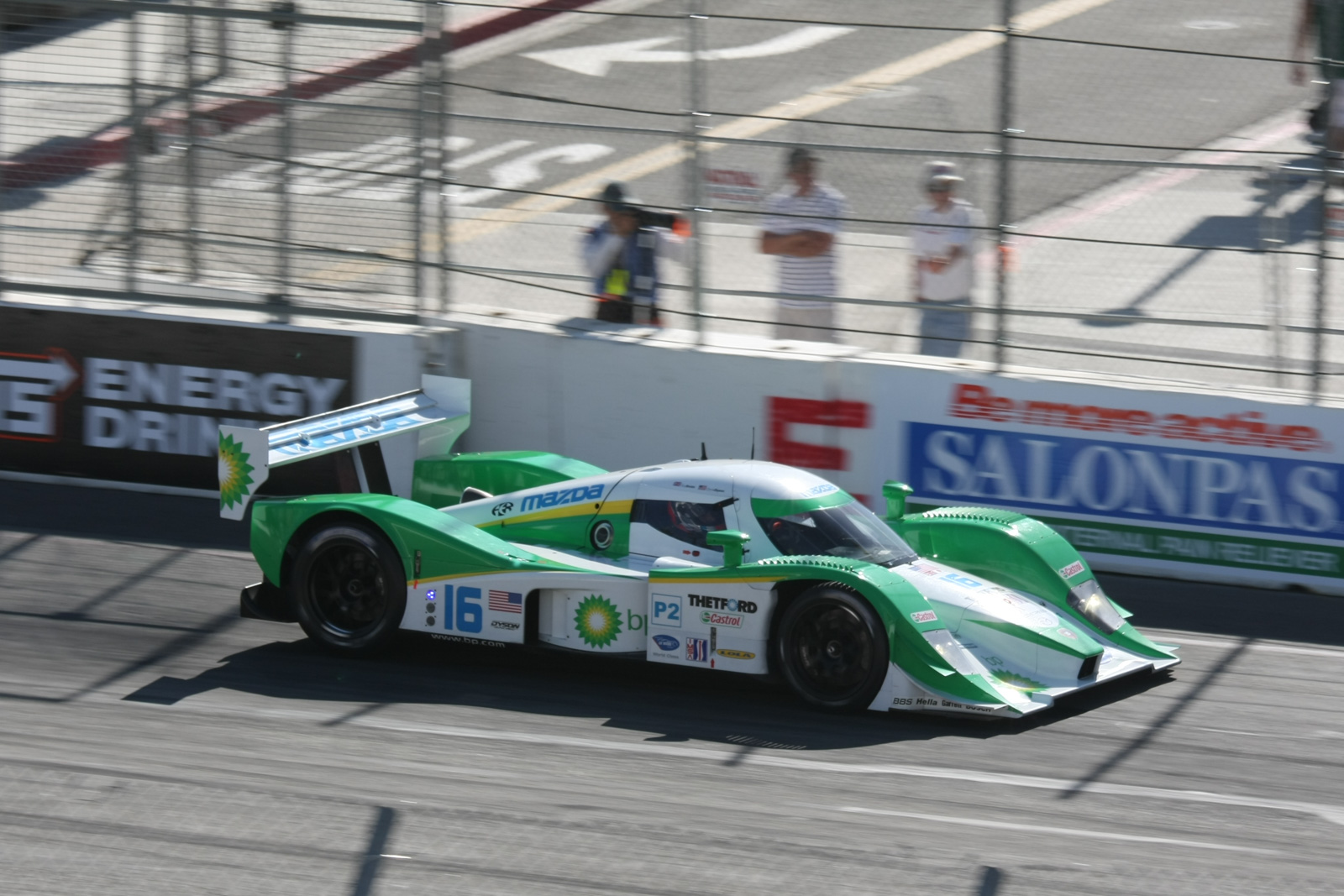I thought I'd share a real-life example from my own photography, to illustrate the power of shutter speed in conveying motion.
Compare the two photos below from the same event.
PHOTO 1—116mm, f/9, 1/80 sec, ISO 100
PHOTO 2—200mm, f/4, 1/1250sec, ISO 100
These are photos from the 2009 Long Beach Grand Prix. Both were shot with a Canon 40D and Canon 70-200 f/4 L IS lens.
I like both of these photos, but I think one of them is 100% better than the other at conveying the feel of speed. You can probably guess which one.
The top photo was shot at a shutter speed of 1/80 sec. The bottom one with a shutter speed of 1/1250.
The top photo, with a slower shutter speed, blurs the background to give a sense of speed and motion.
The bottom photo, while interesting and colorful, looks like a static composition. The car could be parked there for all we know. The photo itself conveys no feeling of motion.
So while I like them both, I strongly prefer the top photo for its sense of movement.
Of course I had to use a little more effort in composing that one. I didn't merely point the camera and snap the shutter as I did with the bottom photo.
In the top photo, I had to pan the camera (very quickly) to freeze the subject while blurring the background. This took practice, and it took many experiments with the shutter speed. I had many failed photos for each one that worked. Here's an example of a failed photo.
PHOTO 3—127mm, f/7.1, 1/320 sec, ISO 100. Motion-blur fail. I panned perfectly to keep the car in focus, but the shutter speed of 1/320 is too fast to really blur the background, so it fails to capture the sense of speed.
In addition to panning, I changed my focus technique for the motion-blurred photo. Given the difficulty of keeping a focus point centered on a moving car while panning, I used the Manual Pre-Focus technique, which I describe starting at 5:44 in the video below.
To set the manual pre-focus point, while I was still in autofocus mode, using a high shutter speed of about 1/2000, I placed my center focus point on a moving car as it raced by the position where I wanted to capture my panning shot. It took a couple of tries to nail one exactly. After each attempt, I zoomed in on the camera's display screen to check the focus and make sure I had nailed the car.
When I got a photo of the car in perfect focus, switched the lens from auto to manual focus. Now it was locked at exactly the right distance.
Now, as I was panning for my "speed" shot, I no longer needed to worry about keeping my focus point on a moving car. I just had to think about keeping the car somewhere in the frame, panning at the proper speed, and clicking the shutter when the car hit the pre-focused position. That's enough to worry about.
It took many attempts, adjusting the shutter speed several times to get just the right amount of blur, but finally I got the shot at the top of this page. I think it was worth it.
MASTERING SHUTTER SPEED - ONLINE VIDEO COURSE
If you're interested in learning more about shutter speed, check out this online video course from my friend Brent Mail:
Click here to learn more about "Mastering Shutter Speed"
Brent and his colleague Johny Spencer have created a highly entertaining and educational set of videos all about shutter speed. Their style is humorous and lighthearted (sometimes even silly), but they manage to pack a lot of great information into the fun.
Here's what one of my long-term customers and most trusted advisors wrote me about Brent's course:
"I recently purchased Brent Mail's "Mastering Shutter Speed" course...and I think it's GREAT!"
Father John Quinn, S.J. — Photography Instructor, Loyola High School, Los Angeles, CA
I trust John's opinion more than just about anyone's, so I checked out Brent's course myself, and it lives up to the praise. If you're looking for an introduction to shutter speed, you need look no further.
Brent is offering Mastering Shutter Speed to my audience at a special price for a limited time, so grab it now before the price goes up.
"Mastering Shutter Speed" — Get the full details here
And of course, Brent will share some of the proceeds with me to help me keep making free photography tutorials for you.
I hope you found this helpful.
Happy shooting!
—Phil


